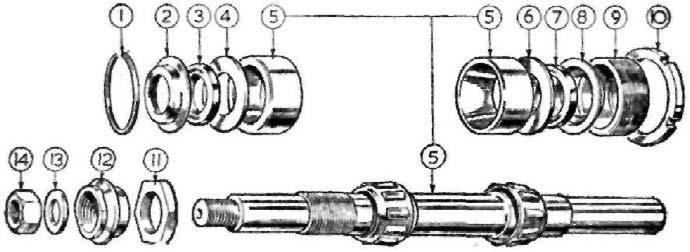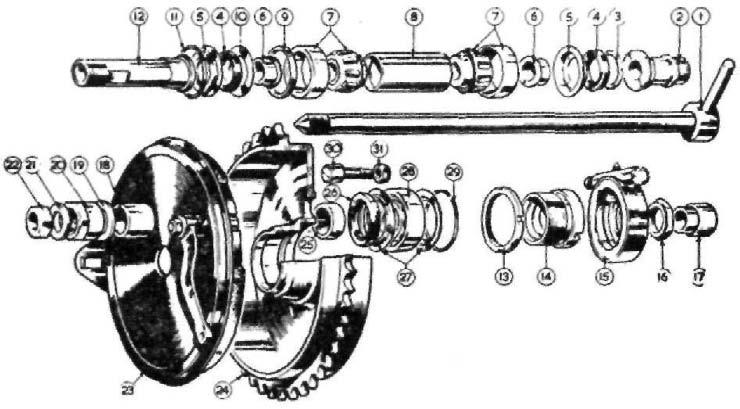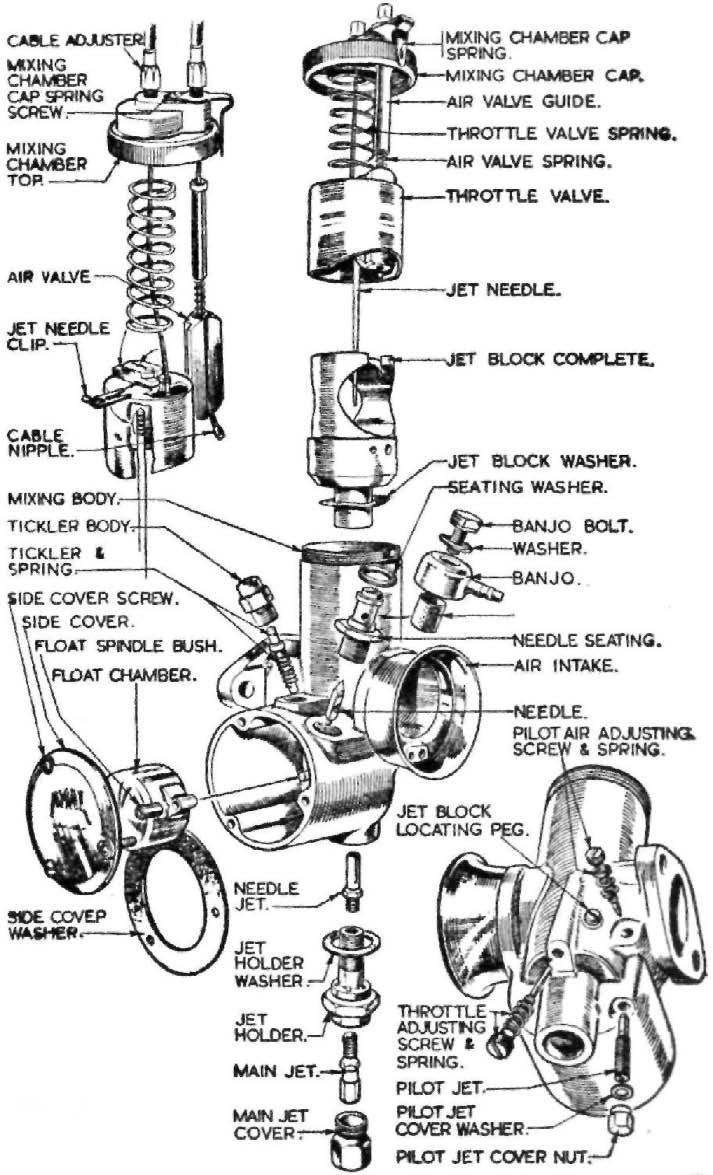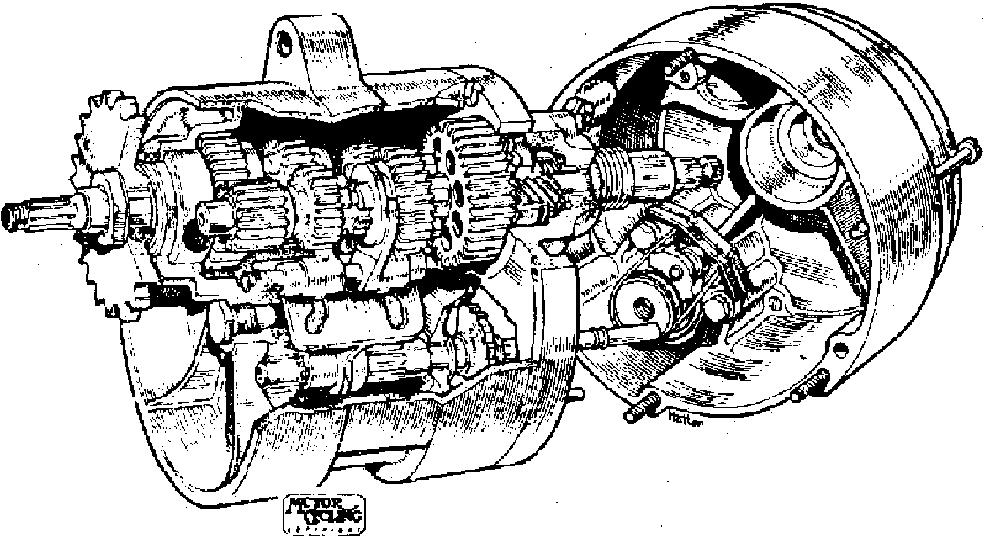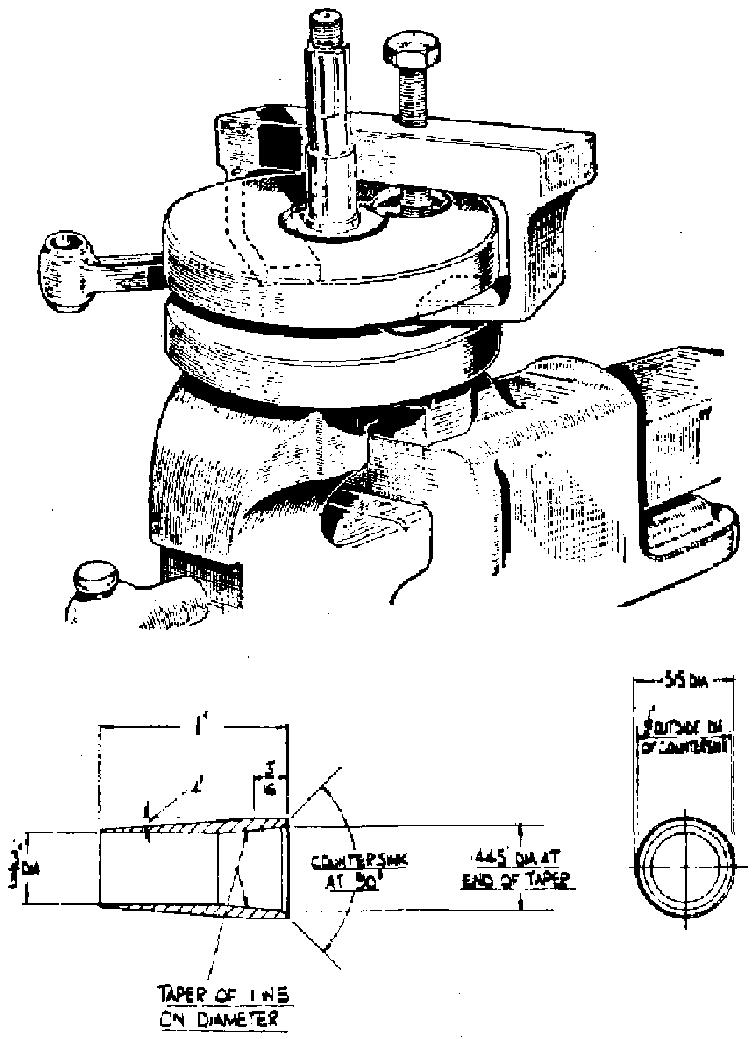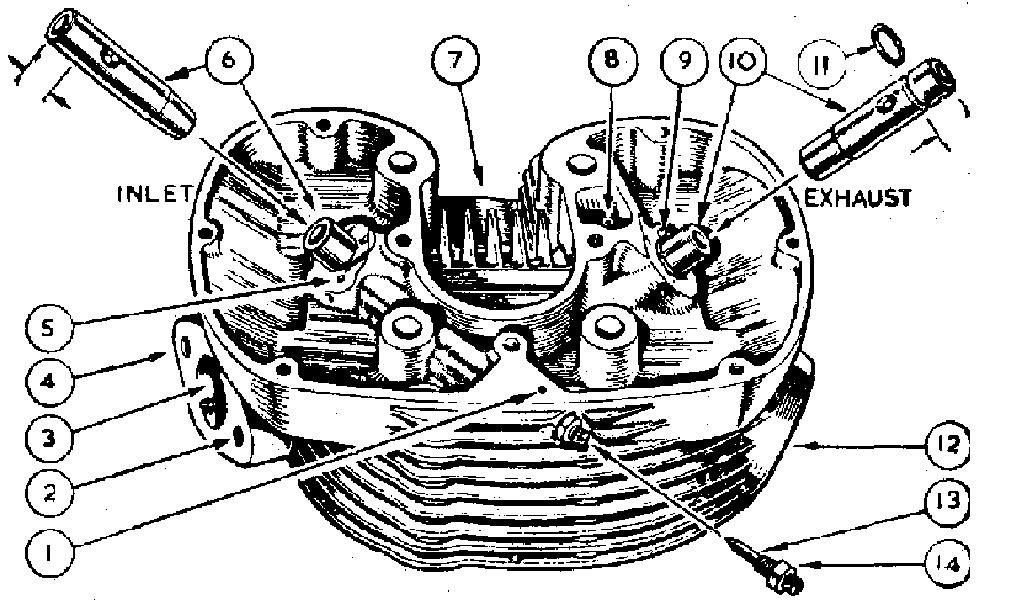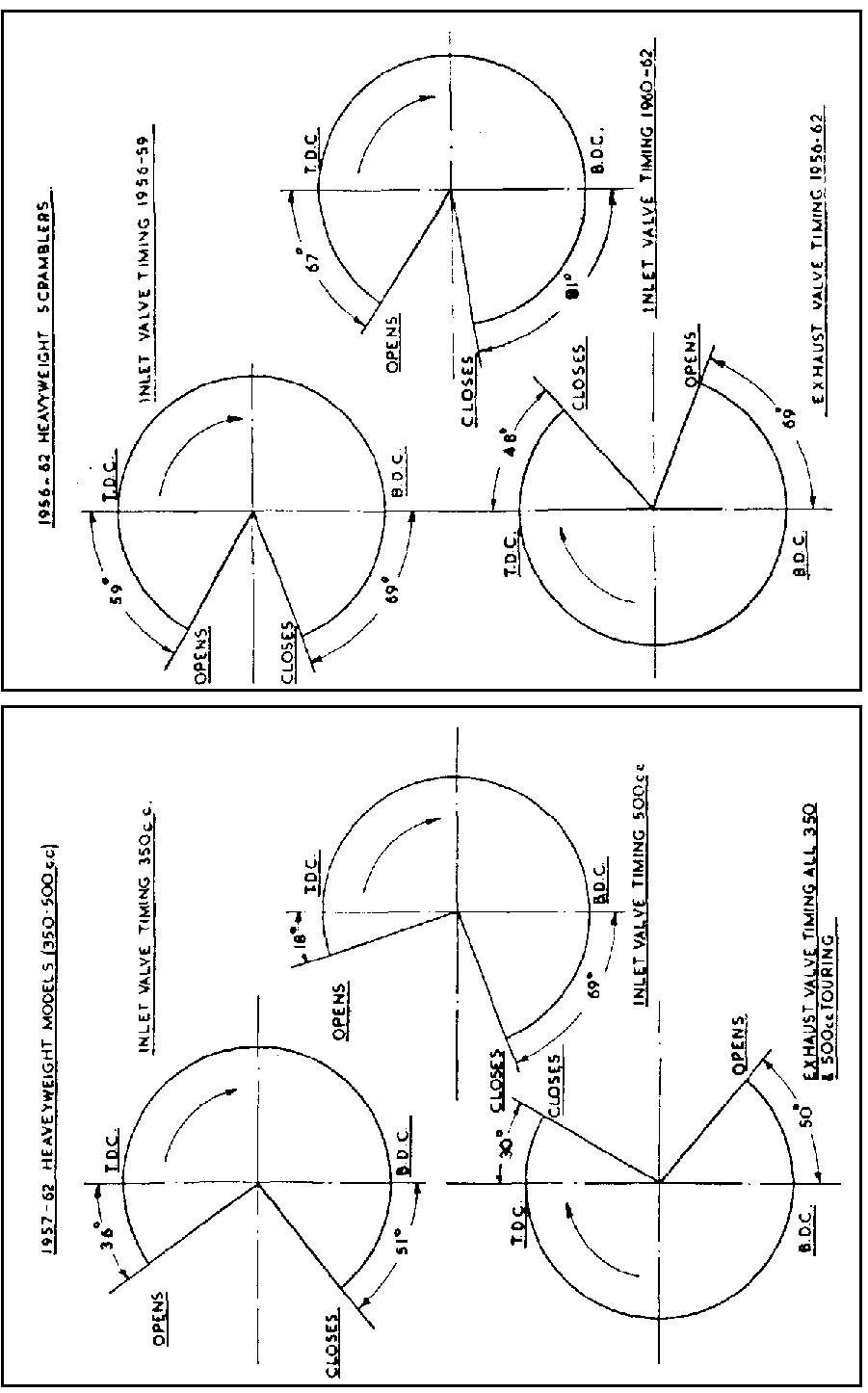borundum stone or very fine emery cloth and afterwards wiped with a cloth moistened with petrol. Adjustment of contact breaker (Magneto type SR-1). If and when adjustment is necessary slacken the two screws securing the fixed contact plate and adjust the position of the plate until the gap, when the contacts are fully opened, is set to the thickness of the gauge. The correct gap should be .010" to .012".
DYNAMO A LUCAS type E3-N dynamo is fitted. It is anti-clockwise in rotation. The cutting in speed is 1250-1500 r.p.m. at 7 volts and at 1,850 to 2,200 r.p.m. is gives an output of 5 amps at 7 volts. The replacement part number is 20028A. The negative brush is insulated and the positive brush is earthed. The two exterior terminals are marked "D" and "F" indicating the respective terminals for the Positive and Field wires that lead to similarly marked terminals on the Regulator Unit. Inspect commutator and brush gear every 5,000 to 6,000 miles. (Maker's Recommendation.) Remove the cover band to inspect commutator and brush gear, The brushes are held in contact with the commutator by means of springs. Move each brush, see they are free to slide in their holders, if dirty, or if sticking, remove and clean with a cloth moistened with petrol. Take care to replace brushes in their original positions, otherwise they will not “bed� properly on the commutator. If, after long service, the brushes have become worn to such an extent that the brush flexible wire is exposed on the running face, or if the brushes do not make good contact with the commutator, they must be replaced by genuine LUCAS brushes. The commutator must be free from any trace of oil or dirt and should have a highly polished appearance. Clean a dirty, or blackened, commutator by pressing a fine dry cloth against it while the engine is slowly turned over by means of the kick-starter. (It is an advantage to remove the sparking plug before doing this.) If the commutator is very dirty, moisten the cloth with petrol, At every 10,000 miles, the complete dynamo should be handed to a Lucas Service Station for dismantling, replacement of worn parts, cleaning and lubrication. Electrical breakdown of the dynamo is most unusual and therefore before assuming this unit is defective, it should be tested as follows: Check that the dynamo, regulator and battery are correctly connected. Test dynamo in position by: (a) Remove the two wires from the dynamo terminals and connect the two terminals with a short length of wire. (b) Start the engine and set to run at normal idling speed. (c) Connect the negative lead of a moving coil voltmeter (calibrated not less than 0 to 10 volts) to either of the two dynamo terminals and connect the positive lead to a good earth point on the dynamo or engine. (d) Gradually increase the engine speed, when the voltmeter reading should rapidly rise and without fluctuation. 114


